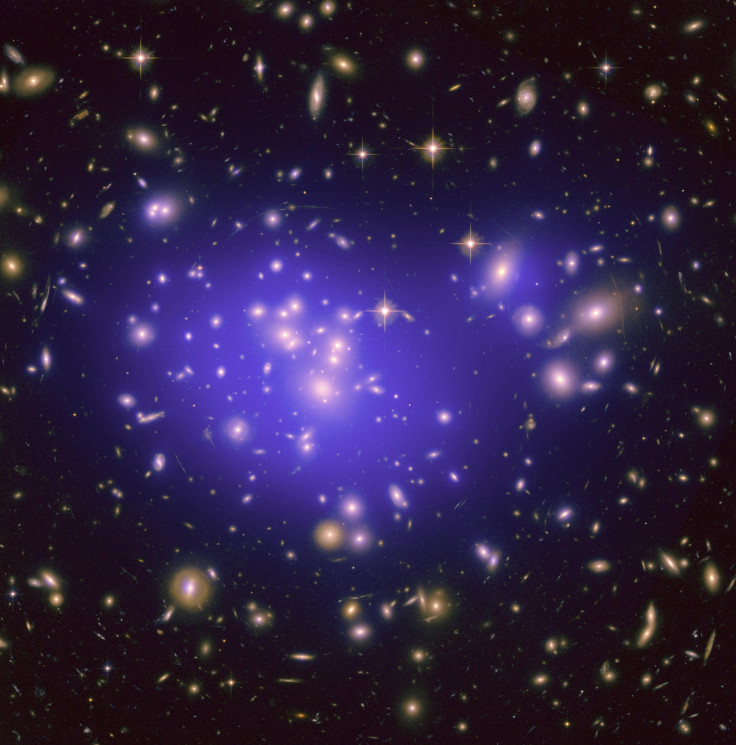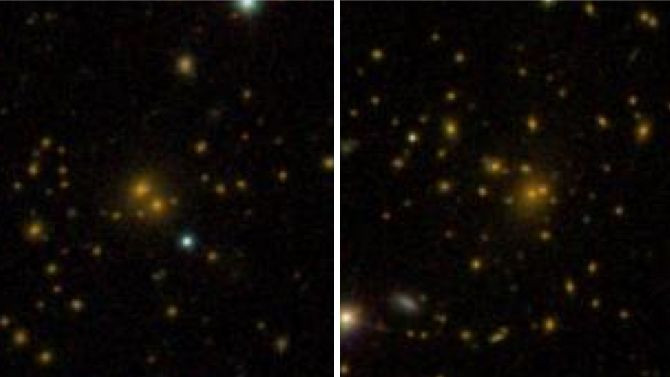Dark Matter Density And Internal Structure Of Galaxy Clusters Are Closely Linked, New Study Reveals

Nearly 95 percent of the universe we live in is “dark” — made up of the dark energy and dark matter that interact with normal matter and energy only through the force of gravity. Given their enigmatic nature, physicists and astronomers have understandably spent decades trying to unravel the mysteries of this “dark” universe, observing galactic collisions and building massive detectors deep underground to help with the hunt.
Current observations suggest that galactic clusters, which consist of thousands of galaxies, reside in regions where the density of dark matter is higher than the average. This mysterious building block of the universe is believed to be responsible for holding galaxies together, and, as a corollary, the heavier a cluster is, the more dark matter it contains.
Now, a new study published Monday in the Physical Review Letters suggests that in addition to the mass of a cluster, its internal structure is also intricately linked to the amount and density of dark matter in it.
“Galaxy clusters are like the large cities of our universe. In the same way that you can look at the lights of a city at night from a plane and infer its size, these clusters give us a sense of the distribution of the dark matter that we can't see,” lead author Hironao Miyatake, an astrophysicist at NASA’s Jet Propulsion Laboratory, said in a statement released Monday.
However, not all galaxies cluster in the same way. Large, massive galaxies are more closely clustered than their smaller, less massive counterparts, as the former are found in regions with greater dark matter density. The variation in the dark matter density, on the other hand, is a product of scarcely understood fluctuations in the energy of space-time that were established when the universe was less than a second old.
Mathematical models suggest that clustering of galaxies also depends on the time it takes galaxies to form. This so-called “assembly bias” happens because galaxies that are rapidly accreting tend to occur in the regions of highest dark matter density, where the mass supply is largest. They are therefore clustered more strongly than objects that are growing slowly.

Assembly bias means that two galaxies with the same total mass, but separate formation histories, should exhibit different amounts of clustering — a prediction that the latest study confirms.
For the purpose of this study, researchers divided approximately 9,000 galaxy clusters into two groups with similar masses. In one, the galaxies were strongly grouped around a center, while in the other the distribution was more diffuse. The group of clusters with diffuse galaxies were found to be much more clumpy than the group that had their galaxies close to the center — observations that are in line with theoretical predictions about assembly bias.
“Measuring the way galaxy clusters clump together on large scales is a linchpin of modern cosmology,” co-author Rachel Mandelbaum from the Carnegie Mellon University in Pittsburgh, Pennsylvania, said in a statement. “We can go forward knowing that mass might not be the only factor in clustering.”
© Copyright IBTimes 2025. All rights reserved.






















